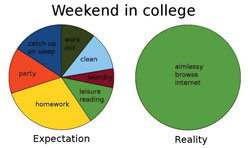Let’s face it, most of us are probably guilty of receiving a text message behind the wheel and fighting off the urge to pick up the phone and see what Earth-shattering update awaits our response. After all, what’s the harm in just glancing down for a few seconds to at least see who the message is from? What could possibly go wrong?
Well, according to the National Highway Traffic Safety Administration’s website, Distraction.gov, there is plenty that can happen when you take your eyes off the road for just a few moments. The site says that “sending or receiving a text takes a driver’s eyes from the road for an average of 4.6 seconds.” At 55 mph, that’s equivalent to “driving the length of an entire football field, blind.” While people of all ages are guilty of this particular brand of multitasking behind the wheel, teenagers are predominately who are associated with texting and driving.
Distraction.gov also says that of the 15 to 19 year old drivers who are involved in fatal crashes, 21 percent of them were on their phones when the accident occurred. The Los Angeles Times also recently reported on a study conducted by two professors at Pennsylvania’s Kings College, which found “four out of five college students texted while driving, and that males in particular were more likely to downplay the dangers of distracted driving, because they believed they were skilled drivers.” Garold Lantz and Sandra Loeb, the professors behind the study, also told the Huffington Post that students feel if something bad does happen because of texting behind the wheel, it will simply happen to somebody else and not to them.
This mentality that is getting more and more younger drivers into trouble. They believe that they’re Mario Andretti behind the wheel of a car and that this gives them the driving prowess to avoid any number of dangerous situations.
Making it down an empty football field blindfolded may sound simple enough, but when you throw in variables like traffic and pedestrians, the levels of difficulty and danger rapidly increase.
However, in recent months there has been a major push by most major cell phone carriers to attempt to eliminate this problem.
AT&T has a television spot featuring country music superstar Tim McGraw talking about taking the cellular provider’s “It Can Wait” pledge to never text and drive, a program that Verizon, Sprint and T-Mobile also support.
In addition, Sprint, which also happens to be the title sponsor of NASCAR’s Sprint Cup Series, has a commercial featuring driver Dale Earnhardt Jr. to promote the carrier’s “Drive First” mobile application. This handy feature will automatically reply to text messages that you can’t because you’re driving.
It’s great to see cellular carriers taking responsibility and attempting to put an end to this problem. Clearly they realize, just as many of their customers need to, that the sooner this dangerous practice ends, driving around the block or across the country will become much safer for everyone.
There is no doubt texting is popular because it’s quicker and easier than dialing a phone to call someone. Because of the need that we have to make things as simple as possible, cellphones have become more like mini computers with a phone built into them.
They allow us to have so much information and so many updates at our fingertips; people will walk down the street with their face buried in their phones, oblivious to those walking around them. Well, the same thing happens when texting and driving.
Bumping into someone on the street because you weren’t paying attention is no big deal, but bumping into someone while behind the wheel of a metal bullet that weighs a few thousand pounds because you weren’t paying attention is a very big deal. Texting a friend that you’re ROFL at their previous message is not worth putting so many other lives at risk. No text is that important. To echo the sentiment of AT&T’s campaign, it can wait.


